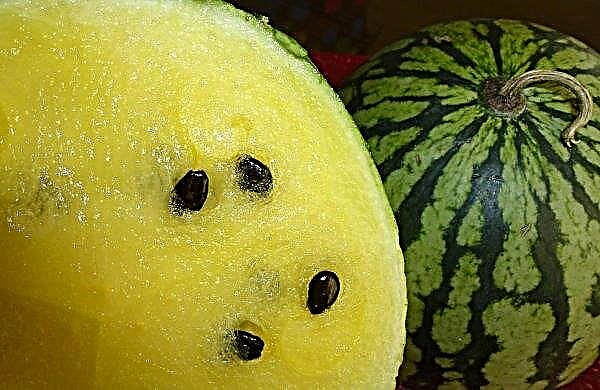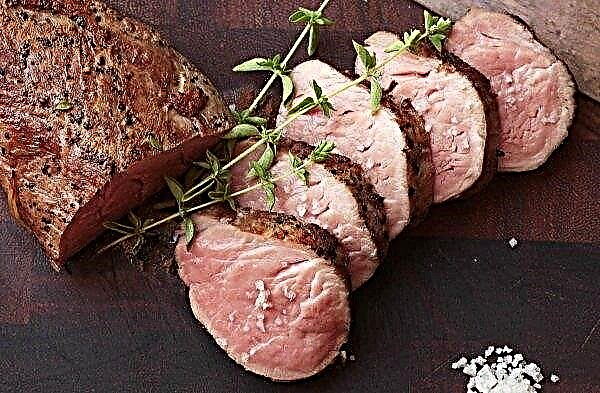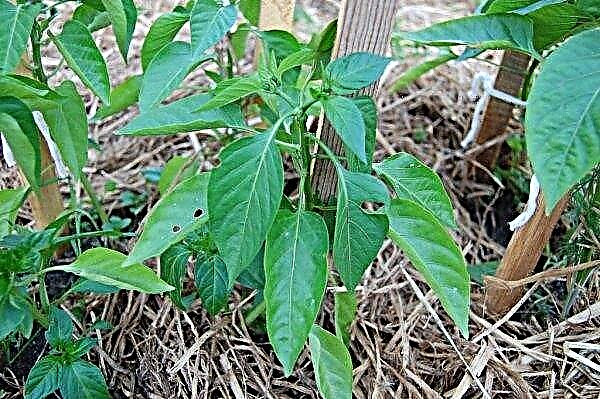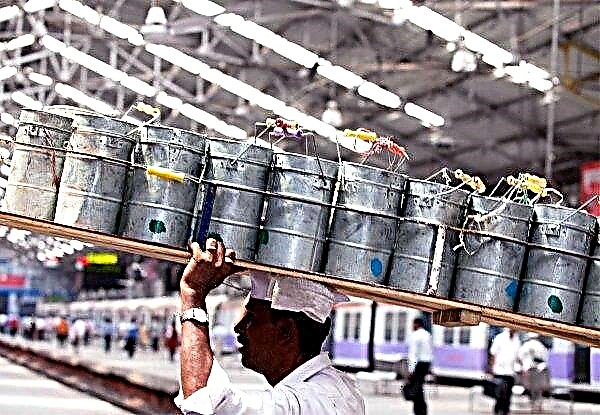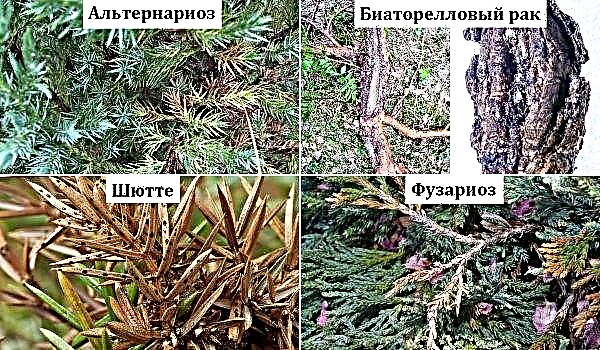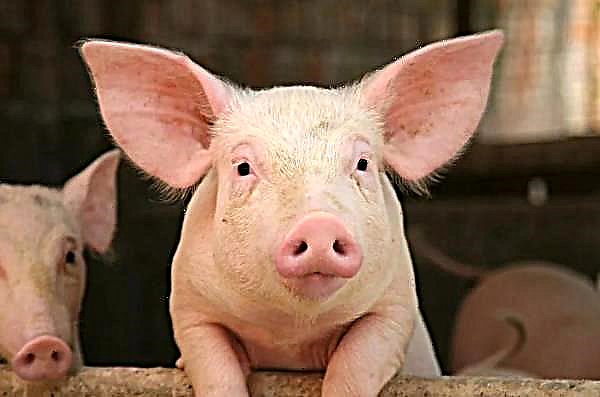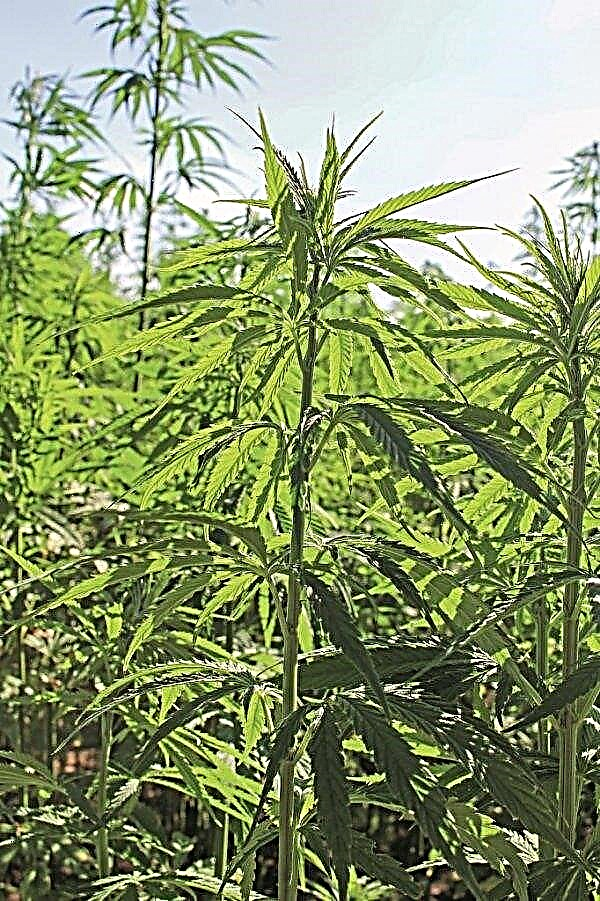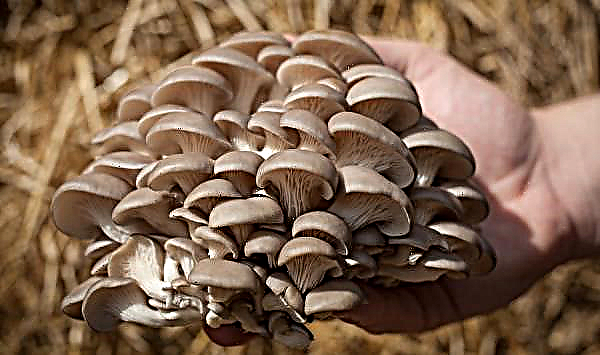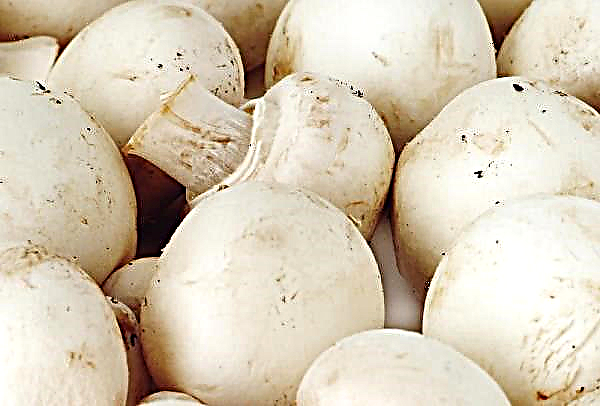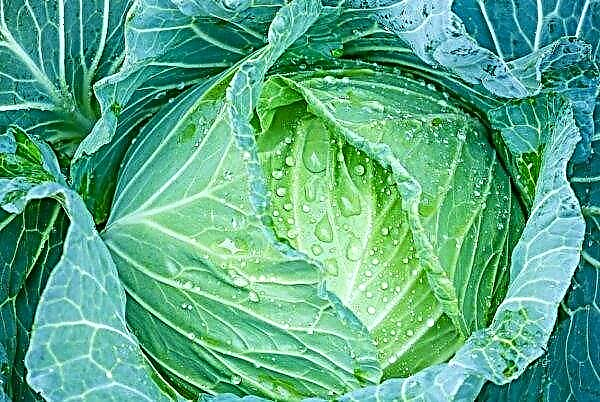Harvesting of most crops is impossible without pollination; it is produced by pollinating insects, chief among which are bees. How the body of these insects is arranged, what is their role in pollination of the garden, why and why the pollination process is needed - read below.
The body structure of the pollinating bee
Bees belong to the flying insect of the hymenopteran order.
Their body consists of:
- the head;
- breast
- abdomen.
The basis of the body is the external exoskeleton, represented by a cuticle - a formation lying on top of the epithelial layer. The body is covered with small fibers, responsible for touch and performing the function of protecting the skin from dust. Parts of the body are attached to each other with a thin layer of epithelium.

On the head are 5 eyes - 2 complex and 3 simple. Complex eyes are located on the sides of the head, and simple - on the crown of the eye. The head consists of strong chitin beams, which are located from the front wall of the head to the back and create the necessary strength of the head capsule. In the lower part of the head, chitin beams are joined by muscles that provide movement of the upper jaw and proboscis and serve as the basis for internal organs.
Antennae are a pair of appendages that attach to the anterior segments of the head and consist of a segment and a long flagellum.Did you know? A bee is able to reach speeds of up to 65 km / h, when it flies without cargo, and speed with cargo will be 30 km / h.
The mouth consists of:
- mandible (mandible) - of the upper jaw;
- proboscis of the lower jaw.
The value of bees in pollination
Do not underestimate the role of the insect in pollination, because they are pollinators of 90% of all cultures in the world. Due to cross-pollination of plants, their productivity and vitality increases, and an increase in the number of green spaces, in turn, has a positive effect on the state of the atmosphere.
In agriculture, the income from the sale of crops pollinated by insects is 10 times higher than the income of beekeepers from the sale of honey and wax products.
Pollination helps increase plant productivity:
- buckwheat - by 50%;
- sunflower - by 70%;
- clover - up to 300%.
Did you know? A bee can smell flowers at a distance of about 1 km.
What kind of plants do bees like to pollinate?
These hardworking insects love pollinating different crops.
Among the fruits and vegetables, the favorite ones are:
- apricot and apple trees;
- melons
- cucumbers
- Tomatoes
- pepper;
- zucchini.
Flowers pollinated by honey insects are:
- roses;
- daisies;
- poppy;
- marigold.
 But there are plants that bees cannot pollinate because of the pungent smell coming from the plant, or, conversely, its complete absence.
But there are plants that bees cannot pollinate because of the pungent smell coming from the plant, or, conversely, its complete absence.Plants that do not attract insects:
- lemon mint;
- fragrant lavender;
- henbane;
- calendula.
How plants attract bees
Flowers attract pollinators with:
- bright petals;
- pleasant aroma;
- convenient structure of the flower, so that the probability of pollination increases (small flowers combine into inflorescences or are surrounded by colorful petals).
Features of pollination of flowers
The melliferous pollinator body is completely covered with small hairs to which pollen adheres. When moving from plant to plant, the insect carries pollen, which is called pollination. During pollination of flowers, pollen partially falls from the villi, and a new one sticks. This process is called cross-pollination.
Principles of Bee Pollination Training
There are 2 principles for training bees for pollination:
- on the aroma;
- to the terrain.
 Training on aroma is carried out according to the principle of developing a conditioned reflex for a specific smell. To carry out training on aroma, insects are fed sugar syrup with the addition of plant flowers, which must be pollinated.
Training on aroma is carried out according to the principle of developing a conditioned reflex for a specific smell. To carry out training on aroma, insects are fed sugar syrup with the addition of plant flowers, which must be pollinated.Top dressing is prepared according to the following recipe:
- A sugar solution is prepared from 1 kg of sugar dissolved in a liter of hot water.
- When the syrup cools down to a temperature of + 20 ° C, 5-6 flower corollas without green cups are added to it.
- Insist syrup for 6 hours.
During the first feeding, the syrup is distributed 200 g per colony, at subsequent times 100 g is given. The duration of feeding depends on the flowering period of the plant that needs to be pollinated.Important! Colonies are fed in the morning before the bees fly to collect nectar, by setting feeders near the hives.
The technique of training on the ground is based on the development of conditioned reactions to a mixed smell in insects. It is necessary to add a flower to the top dressing from a sugar solution, which grows on a field whose territory needs to be pollinated (for example, clover), and also add 2 drops of anise oil. When a large half of the colony flies into the feeder, it is transferred to a site requiring pollination.
Insects that have eaten will return to their hives, where they will mobilize the colony to visit the feeding trough. The aroma of anise oil will help families find the field where the feeders are located, so the insects begin to visit the feeder intensively and capture the territory that needs to be pollinated. The procedure is carried out for 3 days, after which the feeder is removed from the field, but feeding is continued from pure sugar syrup with clover.
The role of the bee in pollination of the garden
Fruit crops are not able to produce crops without pollinating insects, so bees play an important role in the development of garden crops.
Pollination can increase the yield of fruits, and also contributes to the landscaping of the tree, which is pollinated. An apiary can be placed right in the garden, which will contribute to cross-pollination.
Important! Beehives in the garden are located 3 days before the approximate start of flowering.
How to attract pollinators to the site
To attract pollinators to the site, you must:
- To plant flowers in the garden that are characteristic of the region, because bees plant mainly on those plants that they know.
- Plant flowers that differ in color, height and shape. The brighter and more unusual the crops in the flower garden will be, the more honey bees will be attracted.
- The flower garden should bloom all the time, so you should carefully select plant varieties to ensure continuous flowering during the period of activity of bees from April to September.
- Attract pollinating insects with sugar syrup, which is poured into small containers and placed in the garden or garden.
 Honey bee is a unique insect, which is one of the main pollinators on the planet, benefiting not only humans, but also plants.
Honey bee is a unique insect, which is one of the main pollinators on the planet, benefiting not only humans, but also plants.

